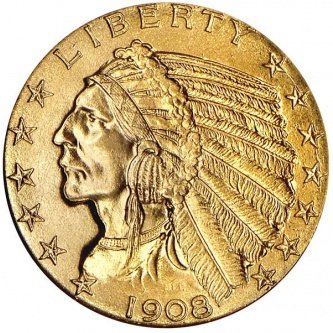
I don’t know about you, but there isn’t a day where I don’t see ads about investing in silver and gold. Coins can be a good investment if you know what you’re looking for. Hopefully, the following will be helpful to you if you decide on this.
Gold Coins As An Investment

With the Coinage Act of 1792, Gold Coins start minting in Philadelphia. During the early 1800’s, discovery of gold occurs in the southern US and two branch mints will open, Charlotte, NC (mint mark ‘C’) in 1837 and Dahlonega, GA (mint mark ‘D’) in 1838. Also, New Orleans (mint mark ‘O’) opens in 1838 producing silver and gold coins. These three locations produce gold coins until the Civil War breaks out in 1861. Only New Orleans reopens after the Civil War. In most cases, Charlotte and Dahlonega have very low mintages and very sought after. Gold would be discovered in California in 1848, which opens the San Francisco mint in 1854. With no train crossing the US yet, they will have to send the gold by boat. In 1870, the Carson City mint (mint mark ‘CC’) opens mainly because of the silver Comstock lode, but also to produce gold coins.
The early gold coins come in denominations of $1, $2,50 (Quarter Eagle), $3, $4 (Stella), $5 (Half Eagle), $10 (Eagle) and $20 (Double Eagle). If you find a Stella coin, consider yourself very fortunate because I think there are less than 1,000 minted between 1879 and 1880. If you’re looking for more affordable gold coins (up to $1,000), you can go for coins after 1886.
With the Great Depression that begins in 1929, people are hoarding gold coins more than ever. In 1933, the US stops producing gold coins, taking us away from the gold standard. Most of the Double Eagle coins minted in 1933 are melted but a few made it to the public. One of them sold for $7,590,020 in 2002.
In 1986, the US mint starts minting bullion coins. They produce 4 different American Eagle gold coins, $5 tenth ounce, $10 quarter ounce, $25 half ounce and $50 ounce. Bullion coins go up and down depending on the current price of gold.
Silver Coins As An Investment

If you are like me, and can’t afford to spend hundreds or thousands of dollars to purchase a gold coin, there is always silver. The only thing is if you are investing, go for the pre-1965 Silver Coins. Modern silver coins and commemoratives are nice to collect, but in many cases, their values have gone down since their original release.
Unlike gold, silver coins are in circulation until 1964 and in smaller denominations from the three cent and half dime to the dollar. A popular silver coin for investing is the Morgan Dollar. There are some Morgans that are easy to get and others are a challenge. The lower mintage Carson City dollars are the ones sought out.
For investing, go for the uncirculated coins over circulated coins. Besides Morgan Dollars, Peace Dollars, Walking Liberty Half Dollars and Franklin Dollars can also be considered.
In 1986, the American Eagle Silver Bullion Dollar comes out. As with the gold bullion coins, the value goes up and down depending on the current price of silver.
Rare Coins
This is a no brainer. Investors look for rare coins like the 1916-D Mercury Dime, 1909-S VDB Lincoln Cent and the 1877 Indian Cent. However, not all low mintage coins are worth as much as you think. For example, the 1931-S penny is the second lowest minted Lincoln cent, but many people hoard them in high condition back in the Great Depression. You may be able to get one in uncirculated condition for under $200. However, a 1914-D which has about 250,000 more minted than the 1931-S goes for $200 in good condition and at least $2,000 in uncirculated condition.
Error Coins

Error coins can be tougher to find than rare coins. Also, don’t believe the hype about how much certain error coins are worth. One that I see on Ebay recently is that a certain Bicentennial Quarter is worth millions. Don’t you believe it! Unless you’re a pro cherry picker who knows what to look for in terms of error, you should probably go for slabbed coins or coins certified from a service like PCGS or NGC.
Beware!
There are counterfeit silver, gold, error and rare coins out there. If it sounds too good to be true, it probably is. Play it safe and buy coins at coin shops, coin dealers and coin shows. Stay away from yard sales and pawn shops unless you know enough about the coin to purchase. Online auctions can be good, but look at the pictures carefully. I haven’t had a problem with online auctions, but for rare or gold coins, go for slabbed ones.
I Hope This Helps You With Your Coin Investment Future
Just realize, this is my opinion in terms of making an investment in coins. Other collectors may believe otherwise, but I think these three categories are a good way to go. If you think of anything else, please comment about it here.
